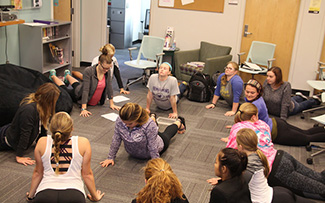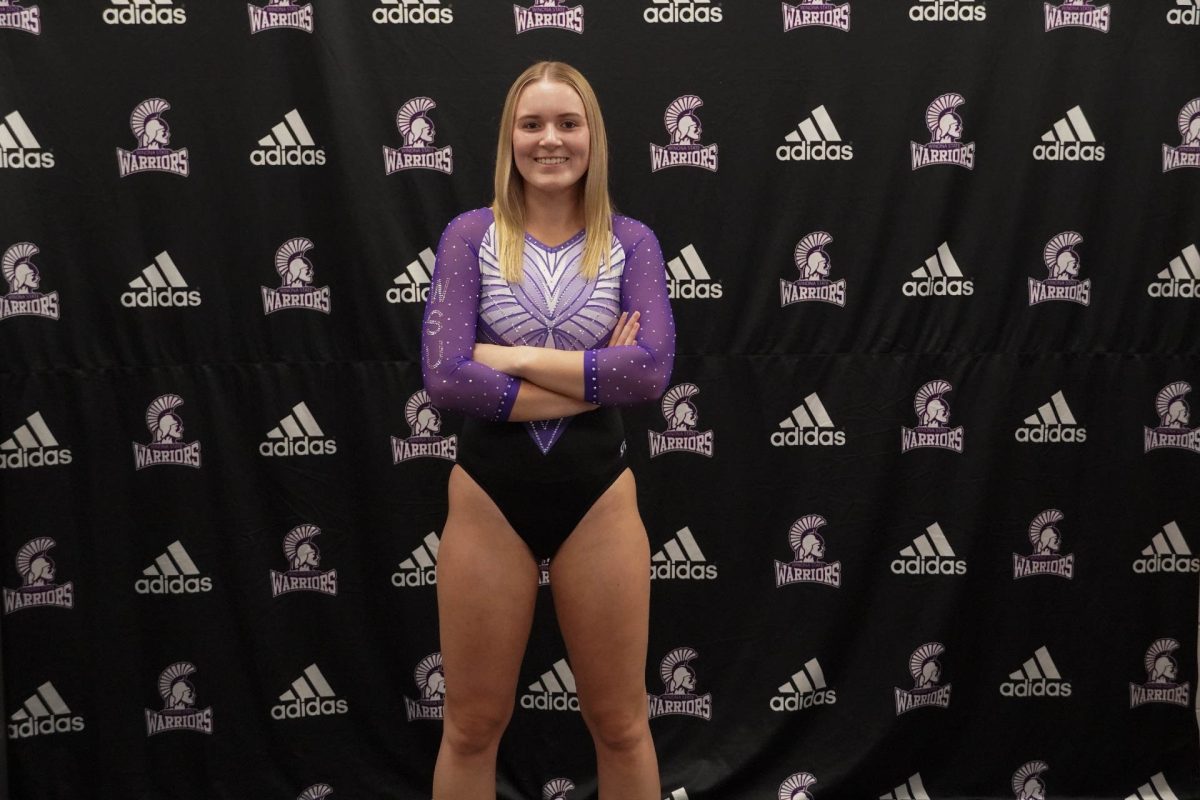
Participants tried out different poses for beginners in yoga. (Photo by Sara Tiradossi)
Sara Tiradossi / Winonan
From standing on their right leg up to moving into a downward facing dog pose, a group of 10 students explored different yoga poses to deepen their focus and build muscle strength at “Yoga for Newbies” on Tuesday, Oct. 18.
The self-declared newbies tried out a sequence of 22 postures, which are supposed to be a complete workout, according to Health and Wellness advocate Sam Raph.
Raph, Hannah Sterkowitz and Sydney Ernst gave a presentation about yoga for beginners, where attendees learned different types of yoga and tried out some poses that are not quite as new, according to Raph.
“The most classical techniques date back to more than 5,000 years ago,” Raph said.
The presentation began with a discussion on yoga and what to expect at a yoga class.
According to Sterkowitz, there are eight basic steps to classical yoga that incorporate different meanings: yama (universal morality), niyama (personal observances), asana (body postures), pranayama (breathing exercises), pratyahara (control of the senses), dharana (perceptual awareness), dhyana (devotion) and samadhi (union with the Divine).
“Most of the yoga of modern times focuses on asana, pranayama and pratyahara,” Sterkowitz said. “Modern yoga is a combination of exercise, breathing and meditation.”
During the presentation, Ernst talked about the reasons why people decide to take up yoga on a daily basis.
“Among yoga’s benefits are an increased flexibility, improved muscle strength, better posture and decreased stress,” Ernst said. “Sitting in poses increases your core strength and helps to build stamina.”
When attending a class, Ernst explained beginners should bring a mat and water, and wear comfortable clothes. As classes start, students will be expected to grab a mat, stretch, sit in lotus position to get centered.
“Go at your own pace because yoga is all about transitioning between poses, making modifications and taking breaths. You’re not supposed to be a master right away,” Ernst said.
A video on anti-gravity yoga also showed a new practice that combines the traditional yoga poses, Pilates and dance with the use of a hammock.
Sterkowitz explained other common yoga practices are Kudalini, which focuses on meditation and breathing, power/flow that is athletically and physically challenging, and pre-natal, a type of yoga ideal for pregnant women.
Classes typically end by the attendees saying “Namaste” and placing their hands at the center of their heart. Namaste is a common farewell and sign of respect and moment for the student and teacher to come together, Ernst said.
Ernst warned students that in the beginning it is hard to maintain focus and take one’s mind off things.
“It takes time to make improvements,” Ernst said.
However, she has experienced positive changes in her body and mentality as she was taking up yoga in her life.
“The time spent doing yoga is great to break up studying, distress and relax,” Ernst said. “Once I’m in a zone, I start to focus on my breathing and myself. Not everything is as bad as it seemed before I started, now I feel much more relaxed and balanced overall.”
-By Sara Tiradossi




























































